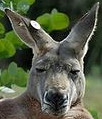I've had it on the shelf for half of forever having bought it at a model show for less than £30. An absolute steal when you consider what a 1/32 aircraft like this costs these days. I know its a good kit because I've built the non-tropical variant which was a lovely build and came from the same original tooling.
I've jazzed it up with a little bit of aftermarket joy. A resin seat with harness molded on and a set of Montex masks so I can paint the markings as much as possible.
Some 109 blurb
The Messerschmitt Bf 109 is a monoplane fighter aircraft that was designed and initially produced by the German aircraft manufacturer Bayerische Flugzeugwerke (BFW). Together with the Focke-Wulf Fw 190, the Bf 109 formed the backbone of the Luftwaffe's fighter force during the World War II. It was commonly called the Me 109 by Allied aircrew and some German aces/pilots, even though this was not the official model designation.
The Bf 109 was designed by Willy Messerschmitt and Robert Lusser, who worked at BFW during the early to mid-1930s. It was conceived as an interceptor. However, later models were developed to fulfill multiple tasks, serving as bomber escort, fighter-bomber, day-, night-, all-weather fighter, ground-attack aircraft, and aerial reconnaissance aircraft. It was one of the most advanced fighters when the fighter first appeared, being furnished with an all-metal monocoque airframe, a closed canopy, retractable landing gear, and powered by a liquid-cooled, inverted-V12 aero engine. First flown on 29 May 1935, the Bf 109 entered operational service during 1937; it first saw combat during the Spanish Civil War where it was flown by the Condor Legion (the Luftwaffe's effective operational training unit).
During the Second World War, the Bf 109 was supplied to several states and was present in quantity on virtually every front in the European theatre; the fighter was still in service at the end of the conflict in 1945. It continued to be operated by several countries for many years after the conflict. The Bf 109 is the most produced fighter aircraft in history, a total of 34,248 airframes having been produced between 1936 and April 1945. Some of the Bf 109 production took place in Nazi concentration camps through slave labor.
The Bf 109 was flown by the three top-scoring fighter aces of all time, who claimed 928 victories among them while flying with JG 52, mainly on the Eastern Front. The highest-scoring, Erich Hartmann, was credited with 352 victories. The aircraft was also flown by Hans-Joachim Marseille, the highest-scoring ace in the North African campaign, who shot down 158 enemy aircraft (in about a third of the time). It was also flown by many aces from other countries fighting with Germany, notably the Finn Ilmari Juutilainen, the highest-scoring non-German ace. He scored 58 of his 94 confirmed victories with the Bf 109. Pilots from Hungary, Romania, Bulgaria, Croatia, Slovakia and Italy also flew the fighter. Through constant development, the Bf 109 remained competitive with the latest Allied fighter aircraft until the end of the war.
Comparisons - In 1940, the E variant was faster than the Spitfire and Hurricane at altitude and could out climb and out dive both. It was also better armed with 2 cannons and 2 machine guns versus the RAF's 8 gun fighters. By virtue of its fuel injection system it could dive straight from level flight as opposed to the RAF fighters which had to do a 'half roll and pull' to go into a dive due to their float carburetors which caused the engine to be starved of fuel for vital few seconds if dived from level flight. This would either allow the 109 to escape or catch its adversary, depending on who was the aggressor. As for a dog fight, the Hurricane could out turn it and the Spitfire could match it.
The 109 was a 'pig' on the ground due its narrow undercarriage (even narrower than the Spitfire's) and visibility was poor versus both the Hurricane and Spitfire. It was also more difficult to fly, it was said you had to be a very good pilot to get the best out of a 109, not so the RAF fighters which were much more pilots' aircraft than could ever be said of the 109.
It was a very small aircraft, even for a single seat fighter of the late 1930s, it was cramped due to the design spec basically being a technical version of the concept 'lets put the biggest engine on the front of the smallest airframe'. Fuel capacity was an issue, the only internal tank being in the fuselage behind the pilot. External tanks became available towards the end of 1940 but the 109 would forever be an interceptor, never a long range fighter.
The kit - box and sprue shots

Aftermarket goodies

Bog standard Trumpy instructions

Nice painting guide

And the plastic. Everything is nice and crisp, lovely surface detail too



The kit comes with an engine (for less than £30? Did you hear that Kotare?)

Canopy bits and the tropical filter for the air intake.

Plan is to cut plastic on this tomorrow































































